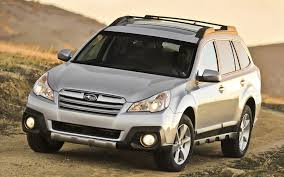3 Reasons Transparency Is Fast Becoming The Trump Card For Today’s Buyers
A colleague of mine recently purchased a 2014 Subaru Outback from a local dealer. He ended up using TrueCar to give him confidence in the price he should pay for the new vehicle.
I had to ask the obvious question: “Why did you, of all people, use TrueCar?”
Now, you should know this guy isn’t a  typical buyer. He’s been around our business for years, holds dealers in high favor and understands more than a little about how dealers make money. In other words, he’s a well-equipped buyer who should know how to get a good deal.
typical buyer. He’s been around our business for years, holds dealers in high favor and understands more than a little about how dealers make money. In other words, he’s a well-equipped buyer who should know how to get a good deal.
“Dale, I didn’t want the hassle. I spent a couple hours online and quickly came to one conclusion—‘this isn’t going to be easy, and I don’t have time to play the game this time.’ TrueCar got me where I needed to be right away—a reasonable price, which I cross-checked, and local dealers who’d play ball rather than cat-and-mouse in the showroom.”
“OK. Fair enough,” I said. “But let me ask you another question: How would it have been different if you’d found a dealer promoting a transaction price you found reasonable and promised to, as you say, ‘play ball’?”
“No doubt about it. I actually wanted to find that dealer, and would have called him right away. Well, not right away…I would have cross-checked the dealer’s price at KBB.com, or maybe even TrueCar, to make sure we were in the ballpark.”
“Interesting,” I said. “One last thing…would you have negotiated the price if the dealer told you ‘this is the price you’ll pay” once you got to the dealership?”
“Probably not, as long as I felt confident I was getting a fair and reasonable price. I don’t think I’m all that different from other consumers who are only suspicious of dealer prices because we’ve been taught to be suspicious. Beyond dealers and doctors, I don’t really question the prices I’m asked to pay as a consumer.”
To me, my colleague’s vehicle purchase experience reflects three new realities that I believe dealers must recognize, if not embrace, to ensure the long-term profitability and vitality of their new and used vehicle departments:
1. Transparency works. I don’t think my colleague’s desire for an easy path to a fair transaction price is all that unique—especially among Gen Y buyers who are 20 years younger than him. Indeed, most dealers recognize the power of transparency in used vehicles to attract customers. Many have adopted market-based pricing and minimal- or no-negotiation sales processes. These dealers are consistently selling more cars. In new and used cars, embracing transparency remains a matter of choice for dealers, for now. Over time, however, I think transparency in pricing and sales processes will become an operational necessity.
2. Negotiation is outdated and over-rated. Dealers have long been trained to “hold gross” through negotiating with customers. In fact, I loved this aspect of the business when I was a dealer. The problem: Negotiation only really works when both sides want to negotiate. And, in today’s market, there are a lot more customers like my colleague—ones for whom the prospect of negotiation signals a less-than-satisfying and time-consuming experience. I’m reminded of a quote from a one-price dealer friend in Minnesota: “Dealers aren’t really negotiating with customers anymore. They’re negotiating with themselves. We see it in our grosses. Customers will pay a bit more when you give them the up-front experience they want.”
3. If you don’t embrace transparency, someone else will. My colleague’s vehicle shopping trajectory is telling and completely understandable. He chose what he determined to be the path of least resistance (e.g., TrueCar) to purchase his new Subaru. But he made this choice because he felt he had to, given he didn’t readily find satisfactory alternatives from dealers themselves.
This situation strikes me as an opportunity for dealers: Those who embrace transparency and promote themselves as trail guides for consumers actively seeking market-credible pricing and a satisfying, trustworthy experience will command more attention and sell more new/used vehicles.
I should add here that a greater degree of price and sales process transparency won’t fix the problem of having the wrong cars in your new and used vehicle inventories. I’ll address new ways to ensure both inventories carry the “right” cars for your market in next month’s column.
